
Weight Guidelines
Human body weight refers to a person’s mass or weight. Body weight is measured in kilograms, a measure of mass, throughout the world.
However, that is not always a good measure of your weight as many other factors can come into play, such as your height, body fat composition and muscle not including your clothes.
What is BMI (Body Mass Index)?
BMI uses the following simple formula to indicate the ratio between weight and height of a person.
BMI = weight (kg) / height (m) / height (m)
The OMRON HBF-222T uses the height information stored in your personal number or when entering information in the Guest Mode to calculate your BMI classification.
If the fat level revealed by BMI is higher than the international standard, there is an increased likelihood of common diseases. However, not all types of fat can be revealed by BMI.
Why does BMI matter?
Determining how much you should weigh is not a simple matter of looking at a height-weight chart, but includes considering the amount of bone, muscle and fat in your body’s composition.
How to measure BMI
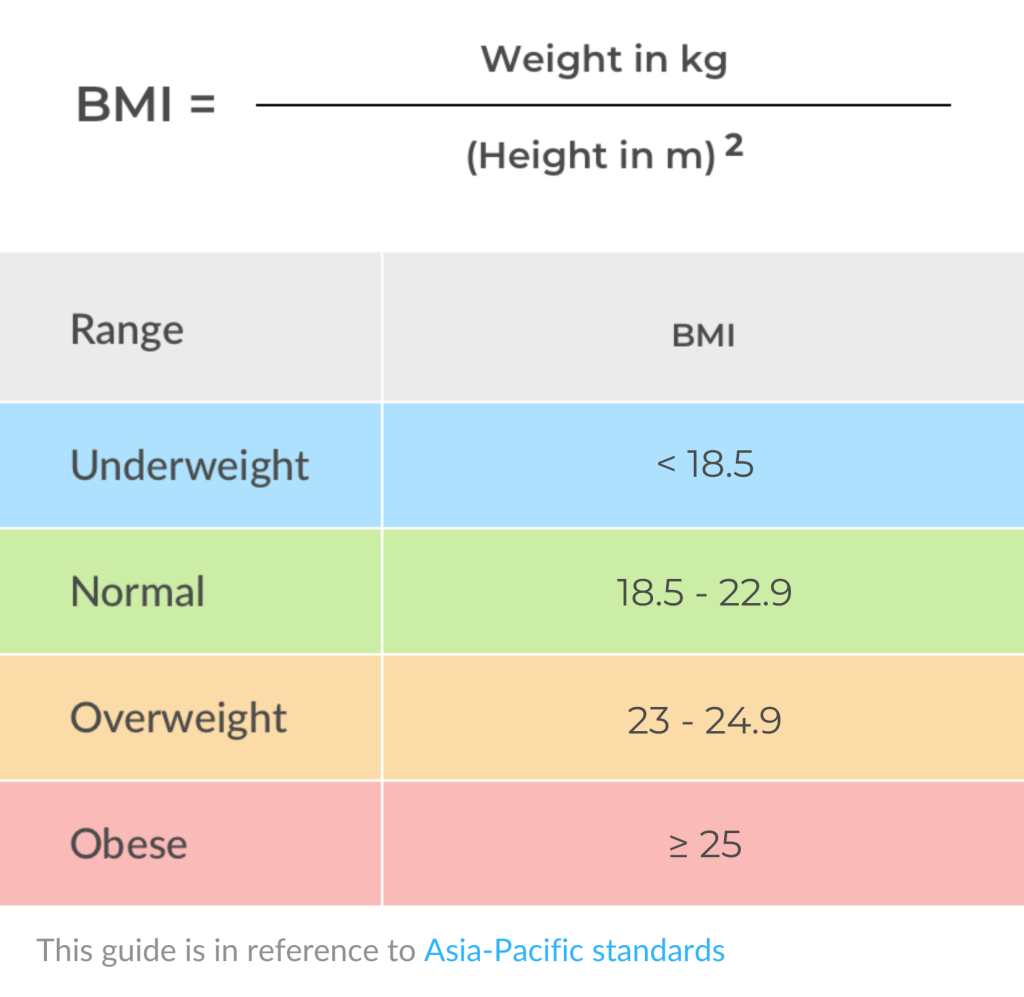
About Body Composition
Recommended measurement times
Understanding the normal changes in your body fat percentage can help you in preventing or reducing obesity. Being aware of the times when the body fat percentages shift within your own daily schedule will assist you in obtaining an accurate trending of your body fat. It is recommended to use this unit in the same environment and daily circumstances. (See chart)
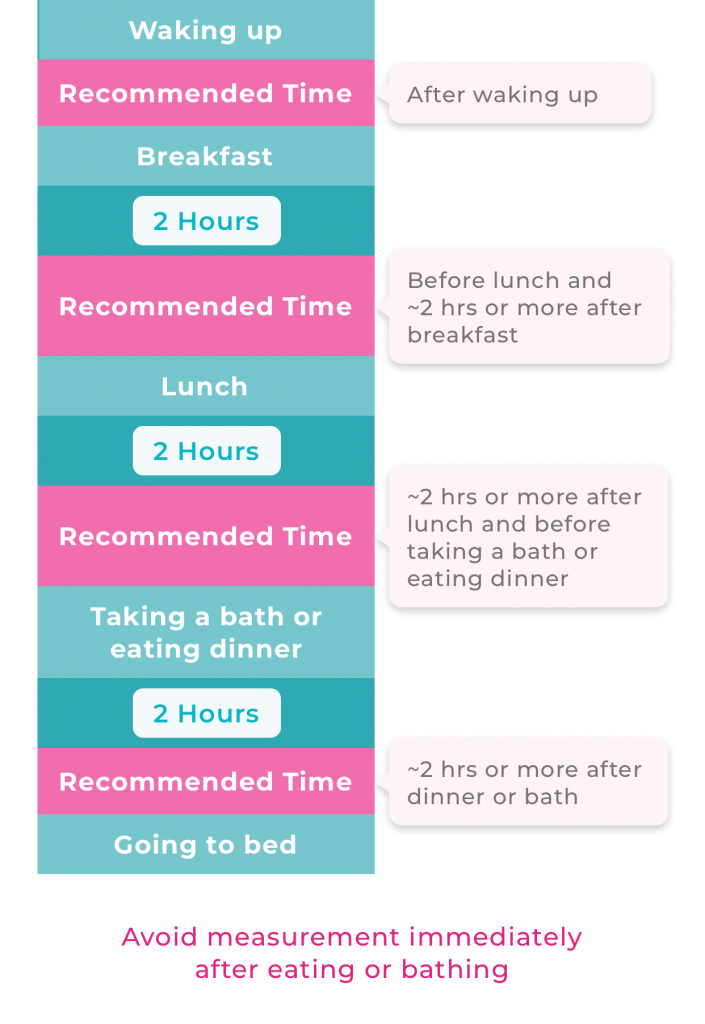
Avoid taking measurements under the following conditions:
– Immediately after vigorous exercise, after a bath or sauna.
– After drinking alcohol or a large amount of water, after a meal (about 2 hours).
If a measurement is taken under these physical conditions, the calculated body composition may differ significantly from the actual one because the water content in the body is changing.
What is Body Fat Percentage?
Body fat percentage refers to the amount of body fat mass in regards to the total body weight expressed as a percentage.
Body fat percentage (%) = {Body fat mass (kg) / Body weight (kg)} × 100
HBF-222T uses the BI method to estimate your body fat percentage.
Depending on where the fat is distributed in the body, it is classified as visceral fat or subcutaneous fat.
Interpreting the Body Fat Percentage Result
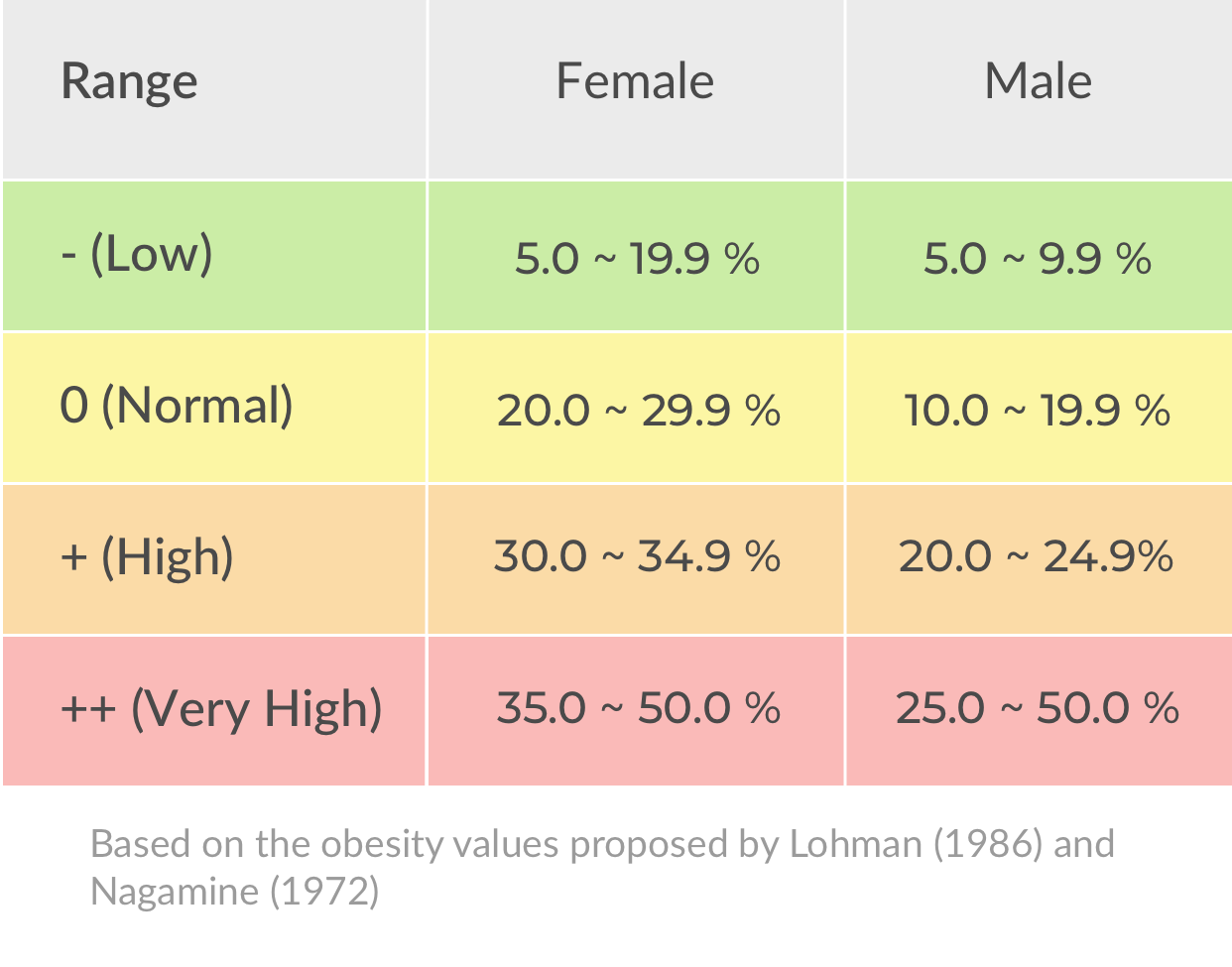
What is Visceral Fat Level?
Visceral fat = fat surrounding internal organs
Too much visceral fat is thought to be closely linked to increased levels of fat in the bloodstream, which can lead to common diseases such as hyperlipidemia and diabetes, which impairs the ability of insulin to transfer energy from the bloodstream and using it in cells. In order to prevent or improve conditions of common diseases, it is important to try and reduce visceral fat levels to an acceptable level. People with high visceral fat levels tend to have large stomachs. However, this is not always the case and high visceral fat levels can lead to metabolic obesity. Metabolic obesity (visceral obesity with normal weight) represents fat levels that are higher than average, even if a person’s weight is at or below the standard for their height.
Interpreting the Visceral Fat Level Results
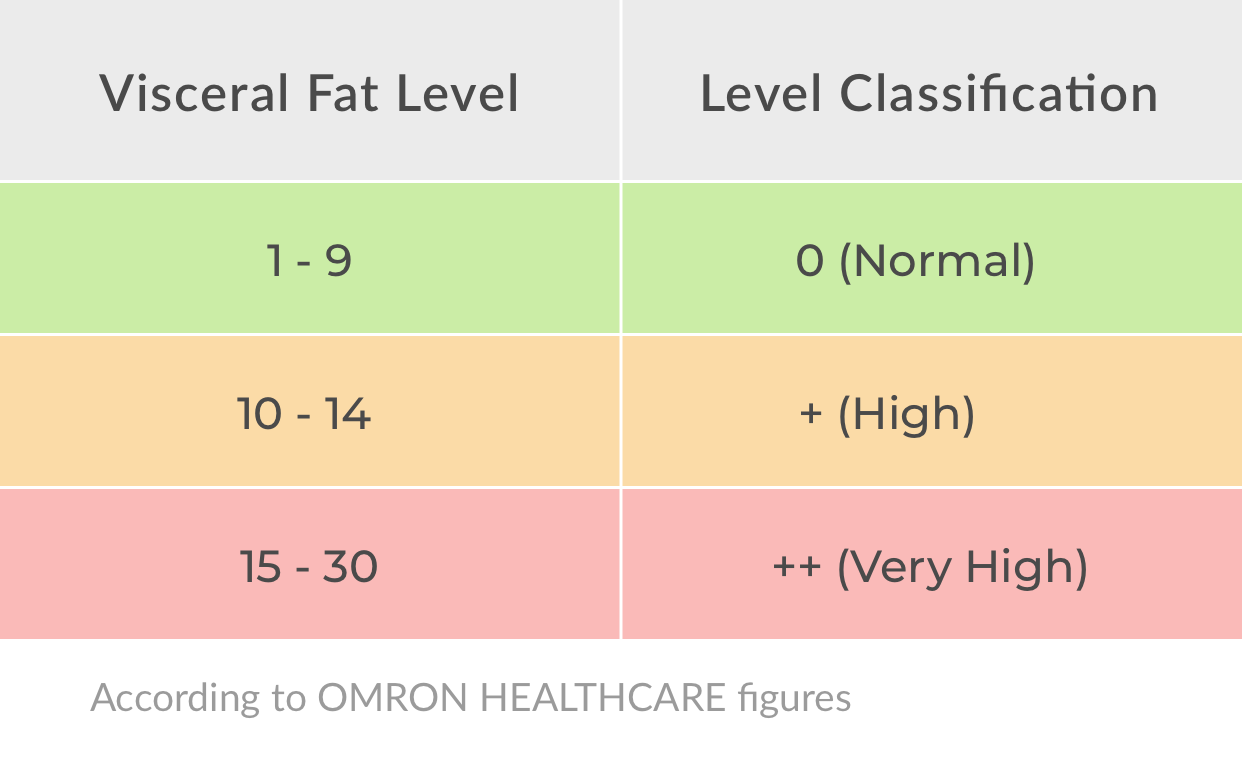
What is Subcutaneous Fat?
Subcutaneous fat = fat below the skin
Subcutaneous fat not only accumulates around the stomach but also around the upper arms, hips and thighs, and can cause a distortion of the body’s proportions. Although not directly linked to increased risk of disease, it is thought to increase pressure on the heart and other complications. Subcutaneous fat is not displayed in this unit, but is included in the body fat percentage.
What is Skeletal Muscle?
Muscle is divided into two types, muscle in internal organs, such as the heart, and skeletal muscle attached to bones that is used to move the body. Skeletal muscle can be increased through exercise and other activity. Increasing the ratio of skeletal muscle means that body can burn energy more easily, which means that it is less likely to turn to fat, and makes it easier to lead an energetic lifestyle.
Interpreting the Skeletal Muscle Percentage Result
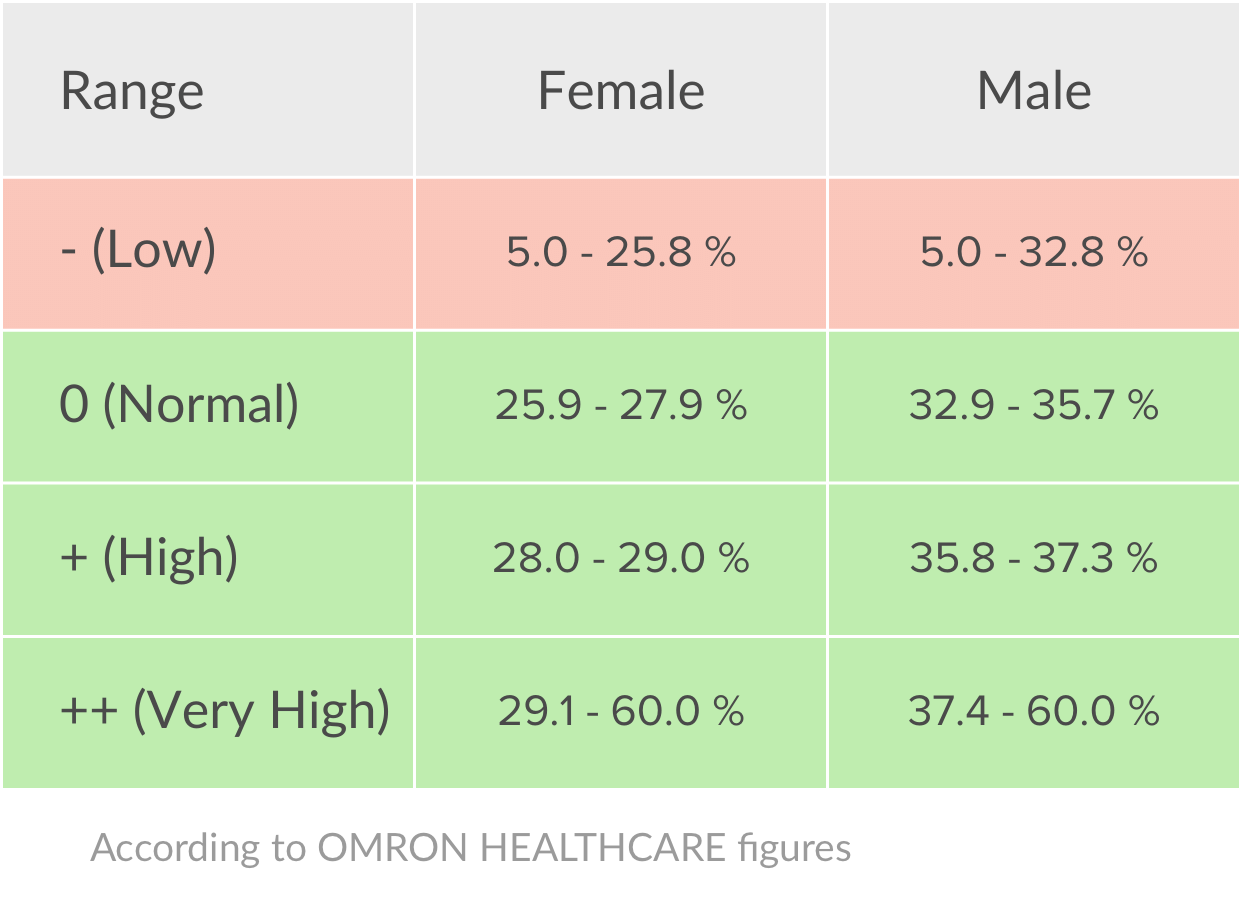
What is Resting Metabolism?
Regardless of your activity level, a minimum level of caloric intake is required to sustain the body’s everyday functions. Known as the resting metabolism, this indicates how many calories you need to ingest in order to provide enough energy for your body to function.
What is Body Age?
Body age is based on your resting metabolism. Body age is calculated for you as a guide that indicates whether your overall body composition profile (based on weight, body fat percentage and skeletal muscle percentage) is above or below the average for your actual age. To know your body age is useful to improve your health condition.